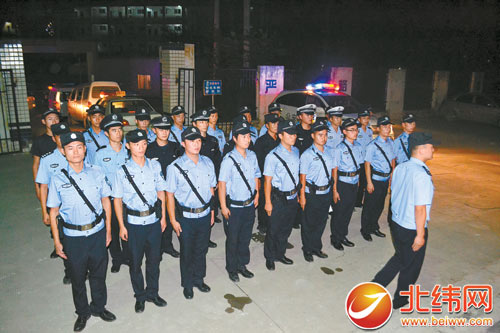Gaza famine: What debates over Palestinians in extreme hunger during the Israel
On April 5, a Reuters article mentioned in passing that there was famine in Gaza. Soon after, they issued a correction: “Gaza suffers widespread hunger, not famine.” An error had been made. Famine was “imminent,” the correction read, but did not yet exist. Just six days later, though, on April 11, several news outlets reported that according to the administrator of the U.S. Agency for International Development, Samantha Power, famine in Gaza had likely already begun.
Campus protests and the crackdowns on them, the intercepted missile and drone strikes from Iran, and the Israeli response to that attack have overtaken the famine conversation in most American media. But in the coming weeks, there will still be continued debate about whether the term “famine” accurately describes the situation in Gaza. And as the long history of famine suggests, the hand-wringing over the use of the word misses the point. This distinction between “widespread hunger” and “famine”—and whether famine is “imminent” or already underway—tells us little about the reality on the ground and what should be done about it.
Three points can help make sense of the conversation. The first is that the threshold for declaring famine is arbitrary. There is no clear line between when famine is imminent and when it begins. The second point is that famine is best understood not as an event, but as a process with mass mortality as its culmination. The third point is that declarations of famine are always contested. Indeed, when asked about Power’s comments, White House press secretary Karine Jean-Pierre insisted that famine was “imminent.”
AdvertisementThe arbitrary threshold for declaring famine can lead to misunderstanding about the severity of the humanitarian plight. Since the mid-2000s, the authoritative way to measure food insecurity and malnutrition has been the Integrated Food Security Phase Classification System (IPC). According to the IPC’s five-part classification scheme, Phase 5, the famine phase, occurs when a population suffers from three simultaneous conditions: when it reaches a crude mortality rate of 2 per 10,000 per day, when 20 percent of households cannot obtain enough food, and when 30 percent of children suffer from acute malnutrition.
Advertisement Advertisement AdvertisementExtreme suffering and mortality, though, can occur without a famine designation from the IPC. Because the separate thresholds must all be cleared, the bar for declaring a famine is high. In fact, in its two-decade history, the IPC has attributed only two famines: one in parts of Somalia in 2011 and the second in areas of South Sudan in 2017. This does not mean these are the only occasions in which people have died due to lack of food. During extended food crises over the past decade, Yemen and Ethiopia have suffered tens of thousands of deaths each under IPC Phase 4 “emergency” conditions without sliding into Phase 5. Sudan is currently facing a food crisis that threatens to be more deadly than the one in Gaza because the affected population is larger, but the IPC has not designated famine there either.
AdvertisementThose situations, though, shouldn’t be thought of as anything less than extraordinarily severe. The IPC framework is critical for identifying and responding to food crises, but we need to be careful how we interpret the information it provides. The lack of an “official” famine designation should not be taken as a sign that everything is fine. Assigning excessive meaning to an arbitrary measure misunderstands the nature of famines. In reality, there is no objective moment when imminent famine becomes famine proper. If the mortality rate is only 1.8 per 10,000, or if “only” 25 percent of children suffer from acute malnutrition, does this make any practical difference? What if some of the thresholds are exceeded but others are not?
Advertisement AdvertisementThe questions underscore how famine is much better understood as a process, rather than a static moment once certain thresholds are surpassed. Around 40 years ago, the Indian journalist Amrita Rangasami made the kind of brilliant point that seems obvious only in retrospect: Mass mortality is not famine itself, but its result. “I regard mortality as only the biological culmination of the starvation process,” she wrote. Though mortality is the stage of famine that draws the most attention, it is a lagging indicator. When people die, it is a sign that things have already gone very wrong.
AdvertisementThere is ample evidence that the famine process has been underway in Gaza for months. Food prices have skyrocketed. Wasting among children (abnormally low weight-to-height ratio) has been observed. People are relying on dirty water that causes gut infections. Diarrhea, a major killer of children during famines, is prevalent. The risk of epidemic disease with the capacity to kill hundreds or thousands is high due to immune systems weakened by hunger, the movement of refugees, and the simultaneous collapse of sanitation and health systems. Inhabitants of Gaza have for more than a month been engaging in coping strategies associated with famine: consuming foods normally reserved for animals, eating in secret, spending extraordinary time and effort looking for food, or harvesting wild plants to stave off hunger. These are not only symptoms of immediate distress; they are also early warning indicators of mass starvation.
Advertisement Advertisement AdvertisementOnce initiated, the famine process cannot easily be reversed. Even if sufficient food is provided, it will be a challenge to distribute it to those in need. Medical conditions resulting from food deprivation require specialized care. Ultimately, a famine cannot end without restoring the physical, social, and economic infrastructure that constitutes a society. Because this takes time, responding to famine only once mass mortality has reached a critical point is something like diagnosing a patient’s fatal cancer only once its growth has become irreversible.
Related From Slate

Emily Tamkin
The Iran Strikes and World Central Kitchen Deaths Have Felt Like Turning Points—in America. In Israel …
Read MoreAuthorities often go to great lengths to deny that famine is happening. In my research on 19th- and 20th-century famines, I have seen food crises that killed hundreds of thousands referred to as “shortages,” “difficulties,” or “near-famine conditions.” In 1943, British colonial administrators in Bengal fastidiously avoided the word, speaking euphemistically of “the India food question.” Three million people died. We can expect contemporary officials to play a similar rhetorical game.
Advertisement AdvertisementThe question is not merely semantic. If it were, it wouldn’t be so fraught. There is emotional and political weight to famine. It is a point of no return and a terrible indictment of those in positions of power. It is not targeted. In fact, young children are particularly vulnerable to death and long-term health problems resulting from malnutrition. It is a war crime under international law. Almost always, those who refuse to say “famine” do so not out of analytic rigor, but to obscure the decisions, policies, and intentions that drive starvation. It is a way for those who allow or cause famines to maintain impunity.
If we consider that the threshold to declare a famine is arbitrary, that famine is a process that unfolds over time, and that the use of the word has always been a matter of dispute, the true nature of the situation in Gaza becomes clear: The famine process has long been underway.
AdvertisementPopular in News & Politics
- The Lawyer Defending Idaho’s Abortion Ban Irritated the One Justice He Needed on His Side
- We’ve Been Entertaining an Illusion About the Supreme Court. It’s Finally Been Shattered.
- You Don’t Want to Know How It’s Going Between Trump’s Lawyers and the Judge Presiding Over His Criminal Case
- Prosecutors Are Finally Revealing Their Strategy Against Trump
Right now, even an immediate cease-fire and unimpeded humanitarian action could not immediately reverse this process. Mortality could, however, be mitigated with a massive influx of food. The amount would have to be large enough to bring down famine prices and account for the devastation of agriculture, transportation, markets, humanitarian distribution networks, and livelihoods—all the things that ensure food security in normal times. It would require authorities to allow a flood, and not just a trickle, of aid into Gaza.
We will continue to see heated discussion about whether what is happening in Gaza should be called a famine. From a humanitarian perspective, this question misses the point. Whether or not it meets the official criteria for Phase 5 of the IPC scale—and it appears that it now does—famine exists in any ethically relevant sense of the word. It has already killed people, and will kill more. Just how many more depends on what happens now, not when the death rate reaches its peak.
Tweet Share Share Comment(责任编辑:资讯)
-
Best Labor Day mattress deals in 2024
 Welcome in fall with a comfortable new mattress that'll help you get great sleep every night. Labor
...[详细]
Welcome in fall with a comfortable new mattress that'll help you get great sleep every night. Labor
...[详细]
-
 雅安日报讯“去年雅安地震的时候,全国各地都支援我们,现在云南鲁甸遭受地震灾害,我们也应该心怀感激前去支援。”5日晚8点,市青年志愿者服务中心外,刘忠强和其他几位志愿者已经集结完毕,他们车上装载着支援鲁
...[详细]
雅安日报讯“去年雅安地震的时候,全国各地都支援我们,现在云南鲁甸遭受地震灾害,我们也应该心怀感激前去支援。”5日晚8点,市青年志愿者服务中心外,刘忠强和其他几位志愿者已经集结完毕,他们车上装载着支援鲁
...[详细]
-
 重建政策的落实,拆迁项目的推进,房建的质量与安全,工程的进度与成效……在石棉城房重建工作组中,县住建局副局长陈文超成天都在思考这些问题。震后,重建政策出台,作为城房重建工作组的一员,陈文超在仔细研究上
...[详细]
重建政策的落实,拆迁项目的推进,房建的质量与安全,工程的进度与成效……在石棉城房重建工作组中,县住建局副局长陈文超成天都在思考这些问题。震后,重建政策出台,作为城房重建工作组的一员,陈文超在仔细研究上
...[详细]
-
 广东时装周“开秀” 非遗文化时装“吸睛”_南方+_南方plus9月17日下午,2023广东时装周秋季主会场迎来吸引眼球的非遗文化时装秀。本次非遗文化时装秀以“穿在身上的文化故事”为主题,秀台上展示的时
...[详细]
广东时装周“开秀” 非遗文化时装“吸睛”_南方+_南方plus9月17日下午,2023广东时装周秋季主会场迎来吸引眼球的非遗文化时装秀。本次非遗文化时装秀以“穿在身上的文化故事”为主题,秀台上展示的时
...[详细]
-
“精致小春姐”顾春芳:华丽白西装、镶钻水晶拖鞋,带来新兴凉果No.1
 “精致小春姐”顾春芳:华丽白西装、镶钻水晶拖鞋,带来新兴凉果No.1_南方+_南方plus“欢迎收听广东‘讲错’电台编外节目之广东省第一届农事运动会乡村直播大赛......”来自云浮市新兴县的村播“精
...[详细]
“精致小春姐”顾春芳:华丽白西装、镶钻水晶拖鞋,带来新兴凉果No.1_南方+_南方plus“欢迎收听广东‘讲错’电台编外节目之广东省第一届农事运动会乡村直播大赛......”来自云浮市新兴县的村播“精
...[详细]
-
 灵关派出所组织民警开展夜间突击检查警队印象年轻、活力、效率,用这三个词形容宝兴县灵关派出所的民警最恰当不过。以二十多岁年轻小伙儿为中坚力量的队伍,用工作的严谨,对上级指派任务绝不打折的风纪,展现了新时
...[详细]
灵关派出所组织民警开展夜间突击检查警队印象年轻、活力、效率,用这三个词形容宝兴县灵关派出所的民警最恰当不过。以二十多岁年轻小伙儿为中坚力量的队伍,用工作的严谨,对上级指派任务绝不打折的风纪,展现了新时
...[详细]
-
 一杯暖茶下肚,偷得半日清闲 | 舌尖上的汕尾·茶叶篇_南方+_南方plus“雪液清甘涨井泉,自携茶灶就烹煎。”“融雪煎香茗,调酥煮乳糜。”自古以来,在天寒地冻的冬季,茶是日常生活中不可或缺的暖意。沐浴
...[详细]
一杯暖茶下肚,偷得半日清闲 | 舌尖上的汕尾·茶叶篇_南方+_南方plus“雪液清甘涨井泉,自携茶灶就烹煎。”“融雪煎香茗,调酥煮乳糜。”自古以来,在天寒地冻的冬季,茶是日常生活中不可或缺的暖意。沐浴
...[详细]
-
 近年来,冬病夏治越来越热,随着夏季三伏天的临近,全国各地中医医院都会开展冬病夏治“三伏贴敷”,这已成为传统中医特色诊疗项目。我市中医医院已坚持开展该诊疗项目4年,7月10日,记者从市中医医院了解到,今
...[详细]
近年来,冬病夏治越来越热,随着夏季三伏天的临近,全国各地中医医院都会开展冬病夏治“三伏贴敷”,这已成为传统中医特色诊疗项目。我市中医医院已坚持开展该诊疗项目4年,7月10日,记者从市中医医院了解到,今
...[详细]
-
 现场观众驻足欣赏精美的蒙山窑瓷器用名山土,烧蒙山器,泡蒙山茶。8月24日,蒙山窑艺术馆开馆仪式在蒙顶山4A级旅游景区举行,一大批采用蒙顶山优质高岭土烧制的蒙山窑瓷器惊艳亮相,吸引了不少瓷器爱好者及游客
...[详细]
现场观众驻足欣赏精美的蒙山窑瓷器用名山土,烧蒙山器,泡蒙山茶。8月24日,蒙山窑艺术馆开馆仪式在蒙顶山4A级旅游景区举行,一大批采用蒙顶山优质高岭土烧制的蒙山窑瓷器惊艳亮相,吸引了不少瓷器爱好者及游客
...[详细]
-
 雅安日报讯22日,由中国妇女发展基金会、百会CRM公司资助的“感恩齐奋进、共建心家园”——全市妇女儿童心理援助骨干培训班正式开班。来自中国科学院心理所、北京红枫妇女心理咨询服务中心的心理咨询专家,为我
...[详细]
雅安日报讯22日,由中国妇女发展基金会、百会CRM公司资助的“感恩齐奋进、共建心家园”——全市妇女儿童心理援助骨干培训班正式开班。来自中国科学院心理所、北京红枫妇女心理咨询服务中心的心理咨询专家,为我
...[详细]

 把更多就业机会和增值收益留在农村
把更多就业机会和增值收益留在农村 “我们心怀感恩支援鲁甸灾区”
“我们心怀感恩支援鲁甸灾区” 迅速行动 力保赴地震灾区鲁甸救灾专线畅通
迅速行动 力保赴地震灾区鲁甸救灾专线畅通 Norris stuns Verstappen at Dutch GP
Norris stuns Verstappen at Dutch GP